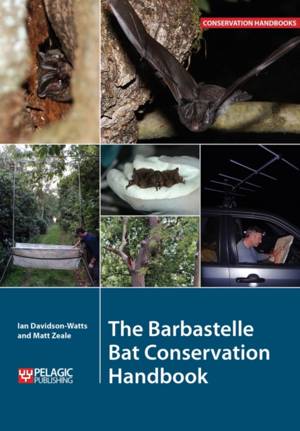
- Afhalen na 1 uur in een winkel met voorraad
- Gratis thuislevering in België vanaf € 30
- Ruim aanbod met 7 miljoen producten
- Afhalen na 1 uur in een winkel met voorraad
- Gratis thuislevering in België vanaf € 30
- Ruim aanbod met 7 miljoen producten
Zoeken
€ 91,95
+ 183 punten
Uitvoering
Omschrijving
The Barbastelle Bat Conservation Handbook is a long-awaited guide to barbastelle bat ecology, behaviour, conservation management and threats, the first publication of its kind to draw together all of the scientific research on the barbastelle bat into one comprehensive volume. The most up-to-date methods for surveying the species are explained, accompanied by case studies and practical tips on how to conserve and manage the barbastelle bat's roosting and foraging habitats. A much-needed resource to help conservation planners and others support barbastelle bat conservation, it is an essential manual for land managers and developers, conservation managers, ecologists and ecological consultants, bat workers and bat groups, nature conservation agencies, other government agencies and departments, conservation NGOs, ecologists, zoologists and other researchers. Contents include: Foreword by Chris Packham. Introduction - purpose and aims; what makes the barbastelle bat unique and why it needs our help; identification; current conservation status; distribution; protection.Chapter 1: The ecology of barbastelle bats - roosting ecology; ranging behaviour: home ranges, commuting, the importance of landscape; dietary ecology: foraging behaviour, prey choice, predator-prey interactions; mating and hibernation. Chapter 2: Survey techniques and considerations - challenges; acoustic surveys and sound analysis; catching and radio tracking; roost survey techniques (including hibernation roosts); diet analysis; interpreting data. Chapter 3: Habitat management and enhancement for barbastelle bats -managing woodlands/forests; preservation and future provision of trees; managing wetlands; barbastelle bats and buildings. Chapter 4: Development control and land management policies - landscape approach; managing the effects of development on roosts, foraging areas and flight lines; development control policies around breeding colonies. Chapter 5: Conservation achievements and priorities - UK BAP; National Bat Monitoring Programme; threats: land-use change, habitat loss, climate change; research requirements. Chapter 6: References, contacts and where to get help.
Specificaties
Betrokkenen
- Auteur(s):
- Uitgeverij:
Inhoud
- Aantal bladzijden:
- 350
- Taal:
- Engels
- Reeks:
Eigenschappen
- Productcode (EAN):
- 9781784270551
- Verschijningsdatum:
- 14/11/2025
- Uitvoering:
- Hardcover
- Formaat:
- Genaaid
- Afmetingen:
- 170 mm x 244 mm

Alleen bij Standaard Boekhandel
+ 183 punten op je klantenkaart van Standaard Boekhandel
Beoordelingen
We publiceren alleen reviews die voldoen aan de voorwaarden voor reviews. Bekijk onze voorwaarden voor reviews.











